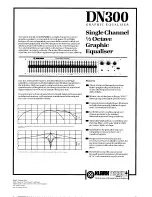
SPEAKER SYSTEM SELECTOR SWITCHES
Your receiver has been provided with two independent speaker selector
switches.
It your receiver is connected with one set of speakers (1 system) as de
scribed in previous paragraph on speaker connections, the SPKR-1 switch must
be in the "on” position. If you have 2 sets of speakers
[ 2
systems) the SPKR-1
and SPKR-2 switches must both be in the “on” position for both systems to
operate.
Should you desire to listen to stereo headphones alone, the speakers (either
one or both systems) can be turned off at your discretion.
TAPE MONITOR SWITCHES 1 and 2
Your receiver is provided with two pairs of TAPE OUT receptacles to permit
recording of program material being reproduced by your stereo system.
If your tape recorder is of the professional type and has a third head for
"monitoring”, it is possible to compare the recording with the original while it
is being made. Simply push the appropriate TAPE MONITOR switch (depending
on which TAPE MON receptacles you are using} to the IN position to listen to
the recording after if has been mode and back to the OUT position to listen
to the program material you are recording.
If you have two professional recorders, each with a monitoring feature, you
may monitor each one individually. However, if both TAPE MONITOR switches are
IN, TAPE MONITOR 2 will fake preference to prevent mixing of both channels.
HIGH CUT FILTER SWITCH
The HIGH CUT FILTER has been designed to reduce the high frequency
response of your receiver. This will reduce annoying record scratch, tape hiss,
FM background noise, etc.
LOW CUT FILTER SWITCH
At times, record changes, turntables and even some FM stations produce
an objectionable low frequency signal that is strong enough to be introduced into
the playback system. This is known as rumble and can be cancelled out by the
special low frequency cut off filter network included in this receiver. Whenever
rumble is present throw the LOW CUT switch "IN”.
TONE DEFEAT SWITCH
This switch permits you to remove the tone controls from the circuit to pro
vide an absolutely linear response. You may use this switch for instant comparison
of program material with either an equalized or flat response.
CONTOUR SWITCH
One of the limitations of human hearing is its tendency to lose sensitivity
to the very low pitched sounds as the program sound level is reduced. It is this
characteristic (known as the Fletcher-Munson effect) which causes one fa play
music programs at high listening levels in order to experience the full rich tone
available from fine modern recordings.
The Harman-Kardon CONTOUR switch compensates for this effect; thereby
eliminating high listening levels as a requisite for full enjoyment of reproduced
music. For warm, full-bodied reproduction at low listening, levels, throw the
CONTOUR switch to the IN position. At high levels, the CONTOUR switch has
no effect.
FM MUTING SWITCH
The purpose of the muting circuit is to reduce audible noise when tuning
from station to station. Since very weak signals may be muted at the same time,
the front panel FM MUTING switch may be used to defeat the muting circuit on
weak signals.
To reduce interstation noise, throw the MUTING switch "ON''. To defeat
the circuit, throw the switch "OFF".
MPX FILTER SWITCH
As FM multiplex reception requires greater signal strength at the antenna
terminals than monophonic reception, transmissions from weak or distant stations
will contain more noise than a monophonic signal of the same strength. This
switch will eliminate noise accompanying these weak multiplex signals.
STEREO AUTO SWITCH
Under normal use for all FM broadcasts the function selector switch should
be placed in the FM position and the stereo auto switch to the IN position.
Your receiver is equipped with a stereo sensing circuit which will auto
matically determine whether your unit is receiving monophonic or stereophonic
broadcasts, and then automatically adjust the mode of operation.
If the station is transmitting stereo, your receiver will automatically switch
on the multiplex section and you will hear the broadcast in full stereo. Should
the station conclude broadcasting in stereo, your receiver will automatically
switch back to monophonic reception.
Should you receive a weak stereo signal whose quality has been degraded
by noise or poor signal conditions, and you wish to listen to this stereo broadcast
monophonically, place the stereo auto switch in the OUT position.































